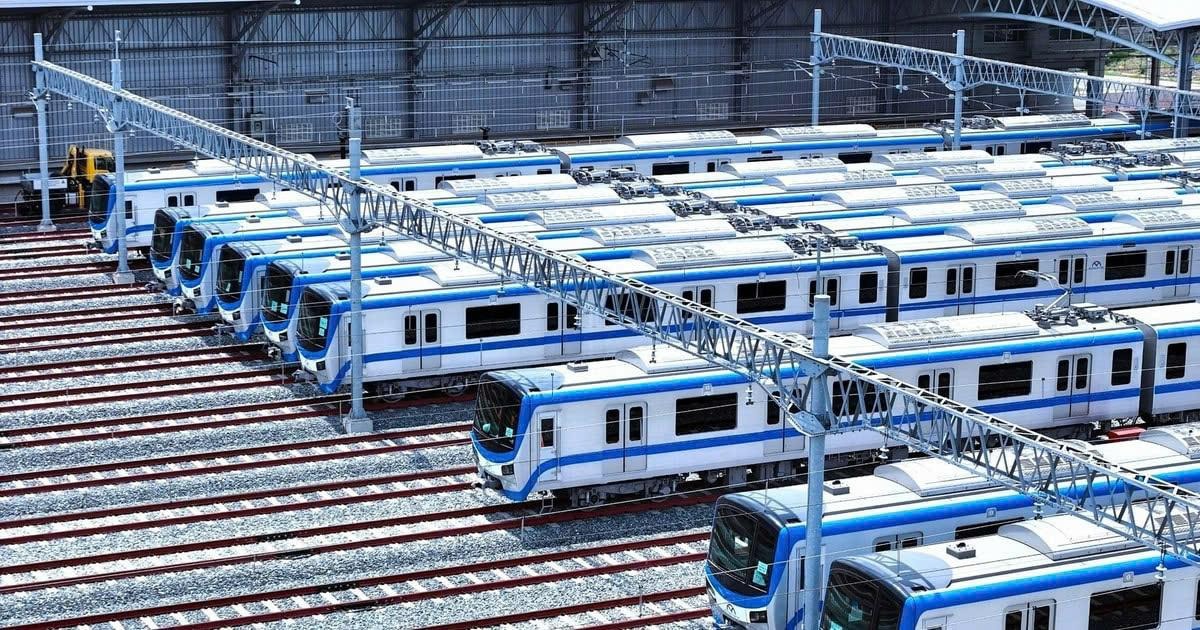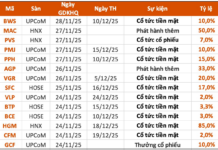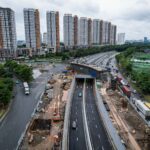Northeast Ho Chi Minh City Buzzing with Exciting Developments
The Northeast region of Ho Chi Minh City, along National Highway 13, is witnessing a flurry of urban infrastructure upgrades. Multi-billion-dollar projects are planned for expansion and seamless connectivity, transforming the area into a growth engine for the Southeast region and boosting local economic development.
Recently, during a press conference on the city’s socio-economic status, the Ho Chi Minh City Department of Construction shared updates on the expansion of National Highway 13 from Binh Trieu Bridge to the Binh Duong provincial border.
The 6km stretch from Binh Trieu Bridge to Vinh Binh Bridge will be widened from 4-6 lanes to 10 lanes, spanning 60 meters. Construction is set to begin in Q4 2026, with completion by 2028. The project’s total investment is nearly VND 21 trillion, making it a key transportation infrastructure initiative at the northeastern gateway of Ho Chi Minh City, directly linking to Hang Xanh and the existing city center.
Upon completion, the project will connect Pham Van Dong Boulevard with Ho Chi Minh City’s Ring Road 2, catering to inter-regional traffic demands between the city gateway and provinces in the Southeast and Central Highlands (via National Highway 14).

Robust transportation infrastructure is a cornerstone for economic growth, industrial development, and real estate value appreciation.
Additionally, Metro Line 2 (Thu Dau Mot – Ho Chi Minh City) is among the nine new urban rail lines prioritized by the city for completion before 2035. This project is set to significantly impact the Northeast real estate market post-merger.
Spanning 21.87km, the elevated line will require an estimated investment of USD 2.27 billion. It will traverse Thu Dau Mot City and Thuan An City, accommodating 30,000-40,000 passengers per direction per hour, and seamlessly connecting to Ho Chi Minh City’s central districts and other urban areas along the route.
Future plans include extending Metro Line 2 to Binh Duong Ward, linking it with Metro Line 1 and further to Chon Thanh (Dong Nai) and Hoa Lu Border Gate. Running parallel to National Highway 13 and the HCMC-Chon Thanh-Hoa Lu Expressway (CT30), it will create a comprehensive regional transportation network. Residents in the Northeast will enjoy a 15-20 minute commute to District 1, gaining easy access to the bustling amenities of the city center.
Once operational, these infrastructure projects will enhance connectivity, drive socio-economic growth, and invigorate Ho Chi Minh City’s real estate market. Properties near Metro Line 2, such as La Pura, Lavita Thuan An, Green Tower, Midori Park The Ten, and The Habitat, are expected to benefit significantly, with property values likely to rise.

La Pura’s sales office welcomes 200-300 visitors each weekend, showcasing its popularity.
La Pura, developed by Phat Dat, is a standout project with a metro station planned right at its doorstep. It’s currently attracting strong market interest. The project is introducing the Risa by La Pura tower with attractive financing options: a down payment of just VND 250 million, 2 years of interest support, and a 3-year grace period on principal repayment, catering to young professionals and urban families.
Other projects along National Highway 13, such as Lavita Thuan An, Green Tower, Midori Park The Ten, and The Habitat, are also poised for value appreciation thanks to Metro Line 2.
Ho Chi Minh City is also proposing expansions for Xô Viết Nghệ Tĩnh and Đinh Bộ Lĩnh roads (VND 10 trillion) and the upgrade of Vinh Binh Bridge (VND 300 billion) to ensure seamless integration with National Highway 13. These initiatives will reduce travel time from the Northeast to Hang Xanh Intersection to just 15 minutes, faster than many other parts of the city.
Another critical infrastructure project is Ho Chi Minh City’s Ring Road 3, a national-level initiative with an investment of VND 75.378 trillion. Spanning 76.34km through the Northeast, it’s expected to open partial sections this year and be fully completed by June 2026, connecting the city center with surrounding areas.
According to a real estate expert, 2025 marks the beginning of a rapid cycle for the property market, as predicted. The simultaneous launch of infrastructure projects is the primary driver of growth in the Southern region, positively impacting the real estate landscape.
The expert emphasizes that from now until 2030, the development of TOD (Transit-Oriented Development) zones will be a strategic focus, encouraging population decentralization to suburban areas post-merger. This will spur the creation of new urban centers and drive property price increases, also diverting investment into other channels like stocks and gold.

Apartments have proven to be a lucrative investment, second only to gold. Source: Batdongsan.com.vn
The correlation between infrastructure development and rising property values is evident. The expert predicts that future projects in Northeast Ho Chi Minh City will predominantly fall within the mid-to-high-end segment, aligning with the city’s average price levels.
“I believe that upon completion of key infrastructure, including Metro Lines 1 and 2 connecting former Binh Duong and Ho Chi Minh City, property prices could double between 2031 and 2032. Apartments priced between VND 2.5 and 3.5 billion near major transportation hubs may become scarce,” the expert noted.
The Southern real estate market is expected to accelerate from late 2025, fueled by infrastructure advancements and year-end investment sentiment. The upcoming property cycle will move faster, with prices climbing in tandem with infrastructure milestones.
However, experts advise investors to adopt a medium-term perspective, aligning with the infrastructure completion timeline. This approach will maximize returns as price escalations become more pronounced.
Unlocking Opportunities: Ho Chi Minh City’s Resolution 98 Upgrade Aims to Attract Strategic Investors, But Challenges Remain
After more than two years, Resolution 98 has yielded numerous positive economic outcomes, yet its most critical goal—attracting strategic investors—remains unfulfilled.
Unleashing Ho Chi Minh City’s Potential: Land-Driven Catalysts for Breakthrough Growth
Empowering Ho Chi Minh City with expanded land reclamation authority and broadening the scope of land funds for BT projects will swiftly address land bottlenecks, enabling the city to attract and engage investors more effectively.













































